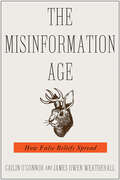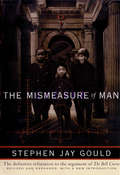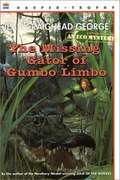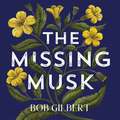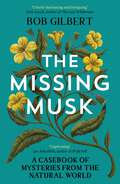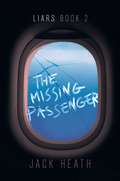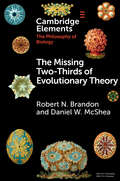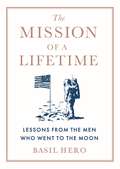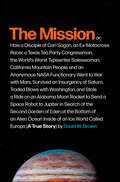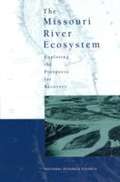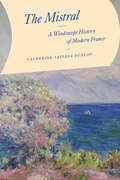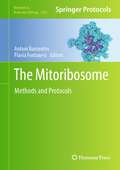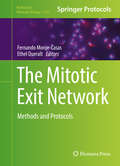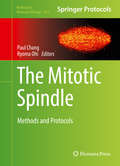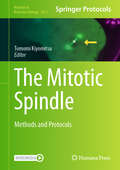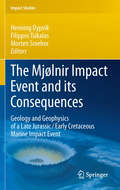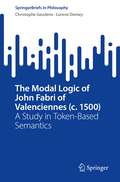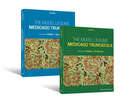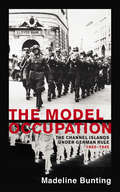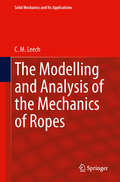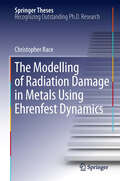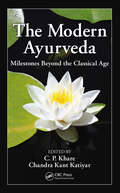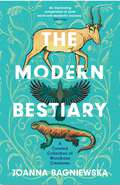- Table View
- List View
The Misinformation Age: How False Beliefs Spread
by James Owen Weatherall Cailin O'Connor“Empowering and thoroughly researched, this book offers useful contemporary analysis and possible solutions to one of the greatest threats to democracy.” —Kirkus ReviewsEditors’ choice, The New York Times Book ReviewRecommended reading, Scientific AmericanWhy should we care about having true beliefs? And why do demonstrably false beliefs persist and spread despite bad, even fatal, consequences for the people who hold them?Philosophers of science Cailin O’Connor and James Weatherall argue that social factors, rather than individual psychology, are what’s essential to understanding the spread and persistence of false beliefs. It might seem that there’s an obvious reason that true beliefs matter: false beliefs will hurt you. But if that’s right, then why is it (apparently) irrelevant to many people whether they believe true things or not?The Misinformation Age, written for a political era riven by “fake news,” “alternative facts,” and disputes over the validity of everything from climate change to the size of inauguration crowds, shows convincingly that what you believe depends on who you know. If social forces explain the persistence of false belief, we must understand how those forces work in order to fight misinformation effectively.“[The authors] deftly apply sociological models to examine how misinformation spreads among people and how scientific results get misrepresented in the public sphere.” —Andrea Gawrylewski, Scientific American“A notable new volume . . . The Misinformation Age explains systematically how facts are determined and changed—whether it is concerning the effects of vaccination on children or the Russian attack on the integrity of the electoral process.” —Roger I. Abrams, New York Journal of Books
The Mismeasure of Man (Revised & Expanded)
by Stephen Jay GouldThe definitive refutation to the argument of The Bell Curve.<P><P> When published in 1981, The Mismeasure of Man was immediately hailed as a masterwork, the ringing answer to those who would classify people, rank them according to their supposed genetic gifts and limits.<P> And yet the idea of innate limits--of biology as destiny--dies hard, as witness the attention devoted to The Bell Curve, whose arguments are here so effectively anticipated and thoroughly undermined by Stephen Jay Gould. In this edition Dr. Gould has written a substantial new introduction telling how and why he wrote the book and tracing the subsequent history of the controversy on innateness right through The Bell Curve. Further, he has added five essays on questions of The Bell Curve in particular and on race, racism, and biological determinism in general. These additions strengthen the book's claim to be, as Leo J. Kamin of Princeton University has said, "a major contribution toward deflating pseudo-biological 'explanations' of our present social woes."
The Missing 'Gator of Gumbo Limbo: An Ecological Mystery
by Jean Craighead GeorgeSixth-grader Liza K., one of five homeless people living in an unspoiled forest in southern Florida, searches for a missing alligator destined for official extermination and studies the delicate ecological balance keeping her outdoor home beautiful.
The Missing Link: West European Neutrals and Regional Security
by Curt Gasteyger Richard E. BissellThe Missing Link brings together the views on the defense of the continent of the five principal neutral nations in Europe--Switzerland, Sweden, Finland, Yugoslavia, and Austria--and examines the evolution and current status of the security threats faced by them. The analyses presented here were commissioned by the Programme for Strategic and International Security Studies at the Graduate Institute of International Studies in Geneva.
The Missing Musk: A Casebook of Mysteries from the Natural World
by Bob GilbertDetective stories from the natural world, from the author of the Wainwright and Rathbones Folio Prize-longlisted Ghost Trees.In 1913 all the musk plants in the world stopped smelling. Unable to resist the lure of this mystery, Bob Gilbert turns detective, determined to find the truth in the tale. Mixing history, memoir, science and nature writing, The Missing Musk takes the listener on a journey of discovery, uncovering the truth behind six mysteries and myths from across the natural world.From the darkest corners of Britain's churchyards to Scotland's Pentland Hills, Bob travels the length of the UK, seeking answers to questions that have intrigued him throughout his life. In search of the musk's long-lost fragrance, he discovers a possibly murderous story. Investigating the true origins of 'star jelly' leads to encounters with unexplained sightihngs and substances. Faced with the urban myth-like stories of mosquitoes thriving in the London Underground, Bob digs deeper.Motivated by the curious, unexplained phenomena found in wild places and on urban streets, and by what these stories tell us about our relationship with nature, Bob peers into microscopes, delves into horticultural archives and chases a glimpse of the strange 'water bear', finding that, when it comes to mysteries, the joy is found as much in the search as in the answer it leads you to . . .(P) 2023 Hodder & Stoughton Limited
The Missing Musk: A Casebook of Mysteries from the Natural World
by Bob Gilbert'Utterly fascinating and intriguing' Neil Ansell, author of The Last Wilderness'A captivating dive into the mysteries of nature' Lee Schofield, author of Wild FellIn 1913 all the musk plants in the world stopped smelling. Unable to resist the lure of this mystery, Bob Gilbert turns detective, determined to find the truth in the tale. Mixing history, memoir, science and nature writing, The Missing Musk takes the reader on a journey of discovery, uncovering the truth behind six mysteries and myths from across the natural world.From the darkest corners of Britain's churchyards to Scotland's Pentland Hills, Bob travels the length of the UK, seeking answers to questions that have intrigued him throughout his life. In search of the musk's long-lost fragrance, he discovers a possibly murderous story. Investigating the true origins of 'star jelly' leads to encounters with unexplained sightings and substances. Faced with the urban myth-like stories of mosquitoes thriving in the London Underground, Bob digs deeper.Motivated by the curious, unexplained phenomena found in wild places and on urban streets, Bob peers into microscopes, delves into horticultural archives and chases a glimpse of the strange 'water bear', finding that, when it comes to mysteries, the joy is found as much in the search as in the answer it leads you to . . .
The Missing Musk: A Casebook of Mysteries from the Natural World
by Bob Gilbert'Utterly fascinating and intriguing' Neil Ansell, author of The Last Wilderness'A captivating dive into the mysteries of nature' Lee Schofield, author of Wild FellIn 1913 all the musk plants in the world stopped smelling. Unable to resist the lure of this mystery, Bob Gilbert turns detective, determined to find the truth in the tale. Mixing history, memoir, science and nature writing, The Missing Musk takes the reader on a journey of discovery, uncovering the truth behind six mysteries and myths from across the natural world.From the darkest corners of Britain's churchyards to Scotland's Pentland Hills, Bob travels the length of the UK, seeking answers to questions that have intrigued him throughout his life. In search of the musk's long-lost fragrance, he discovers a possibly murderous story. Investigating the true origins of 'star jelly' leads to encounters with unexplained sightings and substances. Faced with the urban myth-like stories of mosquitoes thriving in the London Underground, Bob digs deeper.Motivated by the curious, unexplained phenomena found in wild places and on urban streets, Bob peers into microscopes, delves into horticultural archives and chases a glimpse of the strange 'water bear', finding that, when it comes to mysteries, the joy is found as much in the search as in the answer it leads you to . . .
The Missing Passenger (Liars #2)
by Jack HeathJarli only narrowly escaped death after his world-shattering app made him infamous. Now there&’s a new foe afoot and Jarli is far from safe in this thrilling sequel to The Truth App.When a seemingly unoccupied plane crash lands in the middle of Kelton, Jarli&’s attempts to lay low and out of Viper&’s criminal crosshairs crash lands along with it. The cause of the accident is a mystery until his Truth App uncovers a dangerous secret at the crash site—a secret Viper will do anything to keep buried. Suddenly Jarli is a target again and on the run with his high school tormentor, Doug. There&’s no one he can trust, not even the police—and Jarli&’s starting to think Doug is hiding something, too. Constantly at odds and left with no other choice, they team up to conduct an investigation of their own. But when Doug&’s past comes back to haunt them, Jarli fears that there&’s little hope in getting out of this one alive. Kelton was supposed to be the perfect hiding place. But there&’s no hiding from the truth.
The Missing Two-Thirds of Evolutionary Theory (Elements in the Philosophy of Biology)
by Daniel W. McShea Robert BrandonIn this Element, we extend our earlier treatment of biology's first law. The law says that in any evolutionary system in which there is variation and heredity, there is a tendency for diversity and complexity to increase. The law plays the same role in biology that Newton's first law plays in physics, explaining what biological systems are expected to do when no forces act, in other words, what happens when nothing happens. Here we offer a deeper explanation of certain features of the law, develop a quantitative version of it, and explore its consequences for our understanding of diversity and complexity.
The Mission of a Lifetime: Lessons from the Men Who Went to the Moon
by Basil HeroFormer award-winning investigative reporter Basil Hero chronicles the lives and lessons of the twelve remaining Apollo astronauts. Only twenty-four human beings have travelled to the Moon. Theirs were the most daring voyages in mankind's history and their view of Earth from the moon changed them and the way we see our home planet. Now in their emeritus years, the twelve remaining lunar explorers for the first time reveal the true source of courage, leadership, and the quiet patriotism that it took to accomplish their missions. Their voyages to the Moon led them to the most incredible discovery of all: our home planet and its precious place in the universe. "The Eagles," as author Basil Hero calls them, fear for Earth's future and offer sensible solutions to its mounting crises and the path to future space exploration. In The Mission Of A Lifetime, the Eagles share their wisdom and urge us to reframe our view of Earth to theirs: no identifiable nations, borders, or races; just Earthlings working together as a collective civilization. Hero begins each chapter with key life lessons that readers can gain from these honorable men-from overcoming fear to finding gratitude and practicing humility in all that you do.
The Mission: A True Story
by David W. Brown“Exceptionally absorbing and thrilling. ... Masterful.” —NatureA "magnificent" (Scientific American), genre-defying narrative of the most ambitious science project ever conceived: NASA’s deep space mission to Europa, the Jovian moon where might swim the first known alien life in our solar systemIn the spirit of Tom Wolfe and John McPhee, The Mission is an exuberant master class of creative nonfiction that reveals how a motley, determined few expanded the horizon of human achievement. When scientists discovered the first ocean beyond Earth, they had two big questions: “Is it habitable?” and “How do we get there?” To answer the first, they had to solve the second, and so began a vivacious team’s twenty-year odyssey to mount a mission to Europa, the ocean moon of Jupiter.Standing in their way: NASA, fanatically consumed with landing robots on Mars; the White House, which never saw a science budget it couldn’t cut; Congress, fixated on going to the moon or Mars—anywhere, really, to give astronauts something to do; rivals in academia, who wanted instead to go to Saturn; and even Jupiter itself, which guards Europa in a pulsing, rippling radiation belt—a halo of death whose conditions are like those that follow a detonated thermonuclear bomb.The Mission is the Homeric, never-before-told story of modern space exploration, and a magnificent portrait of the inner lives of scientists who study the solar system’s mysterious outer planets. David W. Brown chronicles the remarkable saga of how Europa was won, and what it takes to get things done—both down here, and up there.
The Missouri River Ecosystem: Exploring the Prospects for Recovery
by Committee on Missouri River Ecosystem ScienceThe Missouri River Ecosystem: Exploring the Prospects for Recovery resulted from a study conducted at the request of the U.S. Environmental Protection Agency and the U.S. Army Corps of Engineers. The nation’s longest river, the Missouri River and its floodplain ecosystem experienced substantial environmental and hydrologic changes during the twentieth century. The context of Missouri River dam and reservoir system management is marked by sharp differences between stakeholders regarding the river’s proper management regime. The management agencies have been challenged to determine the appropriate balance between these competing interests. This Water Science and Technology Board report reviews the ecological state of the river and floodplain ecosystem, scientific research of the ecosystem, and the prospects for implementing an adaptive management approach, all with a view toward helping move beyond ongoing scientific and other differences. The report notes that continued ecological degradation of the ecosystem is certain unless some portion of pre-settlement river flows and processes were restored. The report also includes recommendations to enhance scientific knowledge through carefully planned and monitored river management actions and the enactment of a Missouri River Protection and Recovery Act.
The Mistral: A Windswept History of Modern France
by Catherine Tatiana DunlopAn in-depth look at the hidden power of the mistral wind and its effect on modern French history. Every year, the chilly mistral wind blows through the Rhône valley of southern France, across the Camargue wetlands, and into the Mediterranean Sea. Most forceful when winter turns to spring, the wind knocks over trees, sweeps trains off their tracks, and destroys crops. Yet the mistral turns the sky clear and blue, as it often appears in depictions of Provence. The legendary wind is central to the area’s regional identity and has inspired artists and writers near and far for centuries. This force of nature is the focus of Catherine Dunlop’s The Mistral, a wonderfully written examination of the power of the mistral wind, and in particular, the ways it challenged central tenets of nineteenth-century European society: order, mastery, and predictability. As Dunlop shows, while the modernizing state sought liberation from environmental realities through scientific advances, land modification, and other technological solutions, the wind blew on, literally crushing attempts at control, and becoming increasingly integral to regional feelings of place and community.
The Mitoribosome: Methods and Protocols (Methods in Molecular Biology #2661)
by Antoni Barrientos Flavia FontanesiThis volume provides classic and new methods to study the structure, assembly pathway, and protein synthesis ability of mitoribosomes across species. Following an introduction of fundamental concepts on the topic, method chapters present detailed protocols based on cryo-electron tomography, cryo-EM approaches, mitoribosome purification techniques, mitochondrial translation assays, and methods to study mitochondrial mRNAs that are translated on mitoribosomes. Written in the format of the highly successful Methods in Molecular Biology series, each chapter includes an introduction to the topic, lists necessary materials and methods, includes tips on troubleshooting and known pitfalls, and step-by-step, readily reproducible protocols. Authoritative and cutting-edge, The Mitoribosome: Methods and Protocols, aims to be a comprehensive guide for researchers in the field.
The Mitotic Exit Network
by Fernando Monje-Casas Ethel QueraltThis detailed book collects the main methodologies used for the analysis of the activity, localization, and regulation of the components of the Mitotic Exit Network (MEN) pathway during mitotic exit in Saccharomyces cerevisiae, as well as for the evaluation of the roles of these proteins in other cellular processes, such as the condensation of the rDNA, the functionality of the mitotic checkpoints, and cytokinesis. Budding yeast serves as an ideal model system for dissecting the mechanisms that regulate cell cycle progression and providing new insights into the molecular basis of cell cycle control and, thus, into the origin of diseases that arise as a consequence of problems during cell division. Therefore, although this volume concentrates on Saccharomyces cerevisiae as a model, it also details the implications that the research about the MEN have on our understanding of the mitotic exit process in higher eukaryotes. Written for the highly successful Methods in Molecular Biology series, chapters include introductions to their respective topics, lists of the necessary materials and reagents, step-by-step, readily reproducible laboratory protocols, and tips on troubleshooting and avoiding known pitfalls. Authoritative and practical, The Mitotic Exit Network: Methods and Protocols will be a valuable reference for cellular and molecular biologists and biochemists as well as for all scientists interested in the study of the regulation of mitotic exit using budding yeast as a model organism.
The Mitotic Spindle
by Paul Chang Ryoma OhiThis volume includes a series ofprotocols focused on mitotic spindle assembly and function. The methods coveredin this book feature a broad range of techniques from basic microscopy to thestudy of spindle physiologies relevant to cancer. These methods can be appliedto diverse model systems that range from the cell-free Xenopus eggextract system to the moss Physcomitrella patens, in an effort todemonstrate the key contributions made by researchers using multiple modelorganisms. Chapters in The Mitotic Spindle: Methods and Protocols integrate cutting-edge technologies that have only become available due to thecross-disciplinary efforts, such as ATP analogue sensitive inhibition ofmitotic kinases. Written in the highly successful Methods in Molecular Biologyseries format, chapters include introductions to their respective topics,lists of the necessary materials and reagents, step-by-step, readilyreproducible laboratory protocols, and tips on troubleshooting and avoidingknown pitfalls. Thorough and informative, TheMitotic Spindle: Methods and Protocols, is a valuable resource forresearchers who are new to mitosis or are already experts in the field.
The Mitotic Spindle: Methods and Protocols (Methods in Molecular Biology #2872)
by Tomomi KiyomitsuThis detailed volume presents methods for investigating mitotic spindle assembly, chromosome segregation, and cytokinesis. Split into six parts, the book examines advanced microscopes, spatiotemporal manipulation of the spindle and target molecules, quantitative live imaging, screening, centrosome manipulation and purification, and spindle positioning in synthetic or complicated contexts. Written for the highly successful Methods in Molecular Biology series, chapters include introductions to their respective topics, lists of the necessary materials and reagents, step-by-step and readily reproducible laboratory protocols, and tips on troubleshooting and avoiding know pitfalls. Authoritative and up-to-date, The Mitotic Spindle: Methods and Protocols serves as an ideal guide for researchers seeking a better system-level understanding of the mitotic spindle. Chapters 4, 12, 17, and 19 are available open access under a Creative Commons Attribution 4.0 International License via link.springer.com.
The Mjølnir Impact Event and its Consequences: Geology and Geophysics of a Late Jurassic/Early Cretaceous Marine Impact Event (Impact Studies)
by Morten Smelror Henning Dypvik Filippos TsikalasThe Mjølnir impact structure was recognized in 1993 and included in the Earth Impact Database in 1996, based on the discoveries of unequivocal meteorite impact indicators such as shocked quartz, Ir-enrichments, possible glass remnants, fragments of nickel-rich iron oxides, in addition to the convincing complex crater shape of the structure. This book presents the geological and geophysical history of the Barents Sea region along with the discovery of the Mjølnir impact crater. We place the Mjølnir event into the geological framework of the region and present elaborative numerical models of its formation and associated tsunami generation. The book represents an update and synthesis as well as the complete compilation of the Mjølnir crater studies.
The Modal Logic of John Fabri of Valenciennes: A Study in Token-Based Semantics (SpringerBriefs in Philosophy)
by Christophe Geudens Lorenz DemeyThe first book-length study to address issues in modal logic at the eve of the Renaissance, this monograph provides important new insights into the way the debates on modal logic during the post-medieval period tied in with the so-called Wegestreit, the divide between the via antiqua and via moderna that dominated the discourse on logic during the 15th and early 16th centuries. The focus of the book is on the logic and philosophy of language of John Fabri of Valenciennes (fl. c. 1500), one of the last exponents of the terminist approach to logic that was bitterly criticized by the humanist movement. By means of a careful reconstruction of Fabri’s text, the book argues that Fabri's modal logic ultimately goes back to the work of John Buridan, and represents the same approach to the topic as the modal logics that were developed by adherents of the via moderna in Paris. This has significant implications for the historiography of post-medieval philosophy. Fabri was active in Louvain, which until the late 16th century was the most important intellectual center in the Low Countries. According to a long-standing tradition in the scholarship, Louvain was one of the few bulwarks of via antiqua logic on the map of post-medieval Europe. The book argues that this thesis is at least in part a scholarly fiction, and thus in need of revision. By shedding light on an author whose thought has thus far remained entirely unstudied, it also constitutes a valuable step towards a history of philosophy without any gaps. The book is aimed at graduate students and researchers in the history of logic and philosophy, but will also be of interest to intellectual historians, historians of ideas, and to any contemporary modal logician who is interested in the historical roots of their discipline.
The Model Legume Medicago truncatula
by Frans J. de BruijnFully covers the biology, biochemistry, genetics, and genomics of Medicago truncatula Model plant species are valuable not only because they lead to discoveries in basic biology, but also because they provide resources that facilitate translational biology to improve crops of economic importance. Plant scientists are drawn to models because of their ease of manipulation, simple genome organization, rapid life cycles, and the availability of multiple genetic and genomic tools. This reference provides comprehensive coverage of the Model Legume Medicago truncatula. It features review chapters as well as research chapters describing experiments carried out by the authors with clear materials and methods. Most of the chapters utilize advanced molecular techniques and biochemical analyses to approach a variety of aspects of the Model. The Model Legume Medicago truncatula starts with an examination of M. truncatula plant development; biosynthesis of natural products; stress and M. truncatula; and the M. truncatula-Sinorhizobium meliloti symbiosis. Symbiosis of Medicago truncatula with arbuscular mycorrhiza comes next, followed by chapters on the common symbiotic signaling pathway (CSSP or SYM) and infection events in the Rhizobium-legume symbiosis. Other sections look at hormones and the rhizobial and mycorrhizal symbioses; autoregulation of nodule numbers (AON) in M. truncatula; Medicago truncatula databases and computer programs; and more. Contains reviews, original research chapters, and methods Covers most aspects of the M. truncatula Model System, including basic biology, biochemistry, genetics, and genomics of this system Offers molecular techniques and advanced biochemical analyses for approaching a variety of aspects of the Model Legume Medicago truncatula Includes introductions by the editor to each section, presenting the summary of selected chapters in the section Features an extensive index, to facilitate the search for key terms The Model Legume Medicago truncatula is an excellent book for researchers and upper level graduate students in microbial ecology, environmental microbiology, plant genetics and biochemistry. It will also benefit legume biologists, plant molecular biologists, agrobiologists, plant breeders, bioinformaticians, and evolutionary biologists.
The Model Occupation: The Channel Islands Under German Rule, 1940-1945
by Madeleine Bunting‘A masterly work of profound research and reflection, objective and humane’ Hugh Trevor-Roper, Sunday TelegraphWhat would have happened if the Nazis had invaded Britain? How would the British people have responded – with resistance or collaboration? In Madeleine Bunting’s pioneering study, we begin to find the answers to this age-old question.Though rarely remembered today, the Nazis occupied the British Channel Islands for much of the Second World War. In piecing together the fragments left behind – from the love affairs between island women and German soldiers, the betrayals and black marketeering, to the individual acts of resistance – Madeleine Bunting has brought this uncomfortable episode of British history into full view with spellbinding clarity.
The Modelling and Analysis of the Mechanics of Ropes
by C. M. LeechThis book considers the modelling and analysis of the many types of ropes, linear fibre assemblies. The construction of these structures is very diverse and in the work these are considered from the modelling point of view. As well as the conventional twisted structures, braid and plaited structures and parallel assemblies are modelled and analysed, first for their assembly and secondly for their mechanical behaviour. Also since the components are assemblies of components, fibres into yarns, into strands, and into ropes the hierarchical nature of the construction is considered. The focus of the modelling is essentially toward load extension behaviour but there is reference to bending of ropes, encompassed by the two extremes, no slip between the components and zero friction resistance to component slip. Friction in ropes is considered both between the rope components, sliding, sawing and scissoring, and within the components, dilation and distortion, these latter modes being used to model component set, the phenomenon instrumental in rope proofing. The exploitation of the modelling is closed by the suggested modelling and analysis of component wear and life limitation and also of rope steady state heating. These will require extensive experimentation to extract the necessary coefficients, achievable by parallel testing of prototypes and similar structures. This development is focused on the modelling and analysis of ropes and other similar structures. All the modelling is based on the Principle of Virtual Work and admissible modes of deformation. Finally this book is directed towards the various industries involved in design, manufacture and use of ropes, stays and other similar structures.
The Modelling of Radiation Damage in Metals Using Ehrenfest Dynamics
by Christopher RaceAtomistic simulations of metals under irradiation are indispensable for understanding damage processes at time- and length-scales beyond the reach of experiment. Previously, such simulations have largely ignored the effect of electronic excitations on the atomic dynamics, even though energy exchange between atoms and electrons can have significant effects on the extent and nature of radiation damage. This thesis presents the results of time-dependent tight-binding simulations of radiation damage, in which the evolution of a coupled system of energetic classical ions and quantum mechanical electrons is correctly described. The effects of electronic excitations in collision cascades and ion channeling are explored and a new model is presented, which makes possible the accurate reproduction of non-adiabatic electronic forces in large-scale classical molecular dynamics simulations of metals.
The Modern Ayurveda: Milestones Beyond the Classical Age
by C. P. Khare Chandra Kant KatiyarThe Indian population has used Ayurvedic herbs for centuries, but now modern scientific work has led to recognition and acceptance at a global level. The major cause of the increased popularity of Ayurvedic medicine stems from recent scientific validation and its potential in lifestyle management. This growth in research in India and worldwide has
The Modern Bestiary: A Curated Collection of Wondrous Creatures
by Joanna Bagniewska'An illuminating compendium of some weird and wonderful creatures.' ObserverFrom the familiar to the improbable, the gross to the endearing, The Modern Bestiary is a compendium of curious creatures. It includes both animals that have made headlines and those you've probably never heard of, such as skin-eating caecilians, harp sponges, or zombie worms - also known as bone-eating snot flowers. Arranged by elements (Earth, Water, Air), The Modern Bestiary contains well-known species told from new, unexpected angles (rats that drive cars; fish that communicate by passing wind), as well as stranger and lesser-known creatures, including carnivorous mice that howl at the moon, cross-dressing cuttlefish, and antechinuses - small marsupials that literally mate themselves to death. Finally, there are the 'aliens on Earth' - the incredible, the surreal, the magical - such as tardigrades, tongue-eating lice and immortal jellyfish, creatures so astonishing that they make unicorns look rather commonplace.Written by a zoologist with a flair for storytelling, this is a fascinating celebration of the animal kingdom.' [A] beautifully written book to make you laugh, squirm and - perhaps most importantly - appreciate how lucky we are to not have to live inside an anus.' Yussef Rafik'The Modern Bestiary provides a fascinating, accessible and humorous insight into the wonders of the natural world.' Amy Dickman, director of Oxford University's Wildlife Conservation Research Unit 'If you love animals, especially ones with unsavoury habits, this book is for you. Entries are crafted with affection, cast-iron scholarship and an unyielding dedication to exposing as much hilarious weirdness as the animal kingdom can offer.' Tom Moorhouse, author of Elegy for a River'Everyone who loves wildlife - especially fantastically weird and cringingly gross wildlife - should read this masterful book.' Mark Carwardine, author/presenter of Last Chance to See'If ever there was a book that highlighted the bewildering wonders of the natural world, and the need for their conservation, this is it.' Michael Brooke, author of Far from Land
